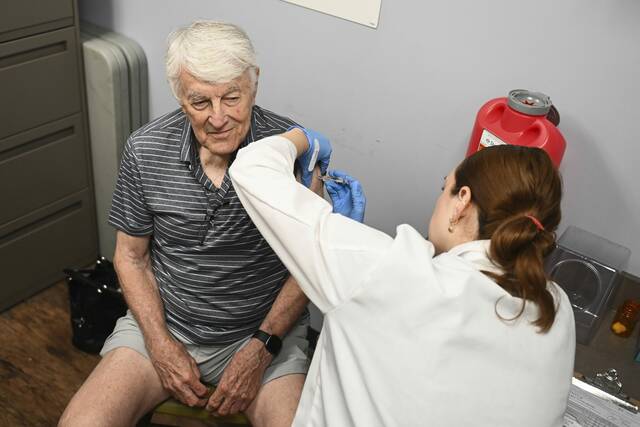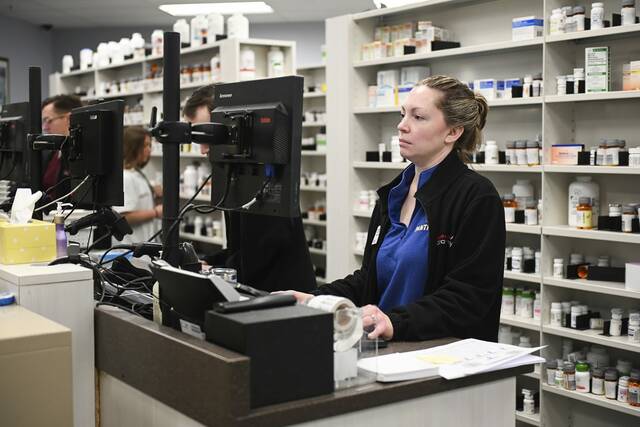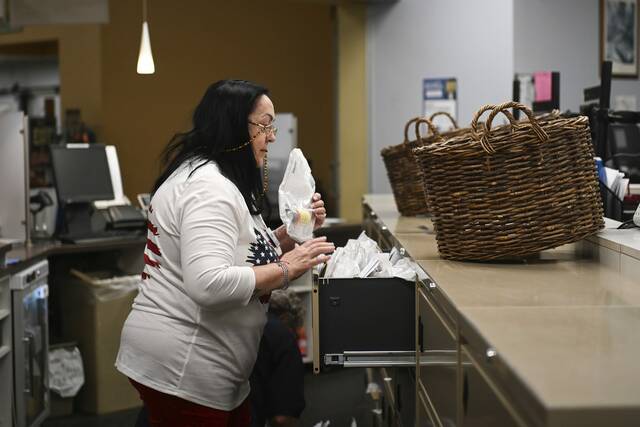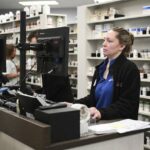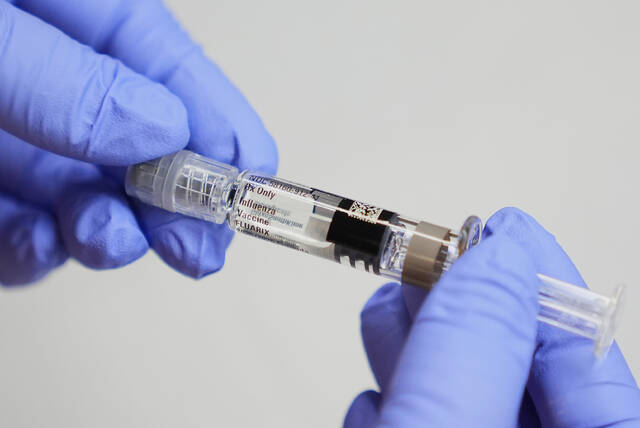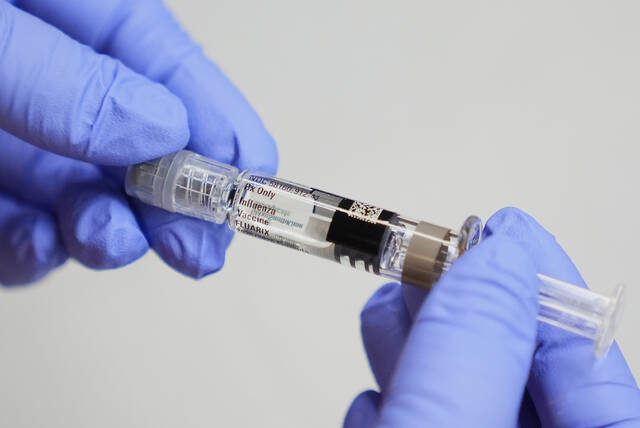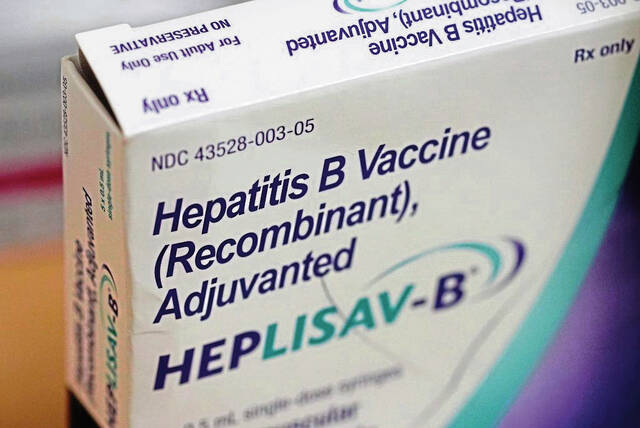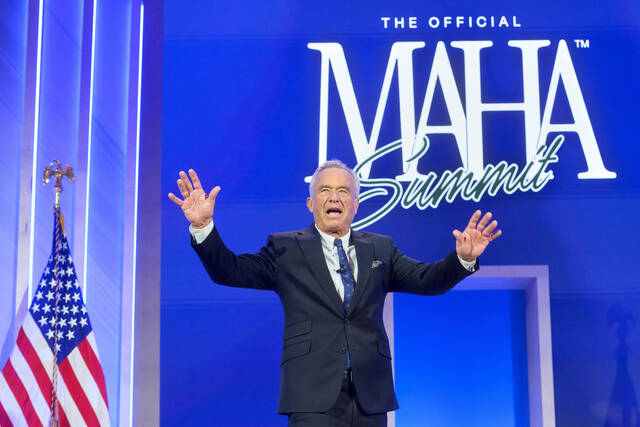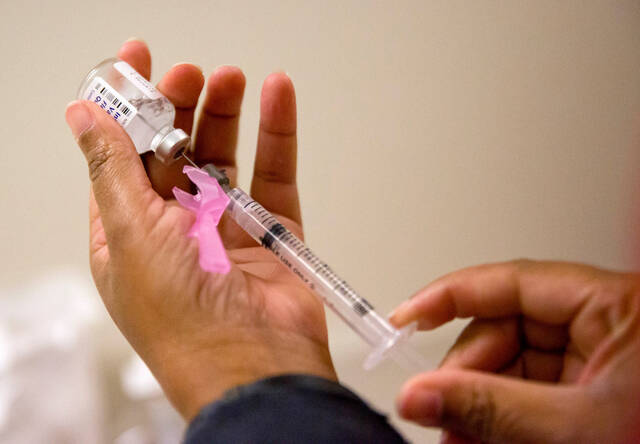As chain pharmacies decline, grocery stores are picking up the slack.
Rite Aid’s descent into bankruptcy — and the dash to carve up its assets — is the latest example. Rival drugstores CVS and Walgreens have snapped up millions of potential customers by way of their prescription files, but supermarkets are getting in on the action, too.
Giant Eagle bought 83 stores’ worth of files, which contain information about patients’ medications, doctors, dosages and more. Bill Artman, CEO of the Cranberry-based grocer, said part of the rationale for selling its GetGo convenience stores this week was to reinvest the $1.6 billion payday in pharmacies. Kroger and Albertsons made similar purchases of Rite Aid’s pharmacy assets without disclosing many details.
The trend is larger than what’s unfolding with Rite Aid, though. Boston-based consulting firm Bain & Co. projects grocers and mass merchants, like Walmart and Costco, will likely grow their share of the pharmacy market from about 30% now to 40% in 2029.
Why the rush to dive further into an ailing industry?
Grocery stores don’t have some secret formula to making money off prescriptions. They, too, are feeling the squeeze from pharmacy benefit managers, the middlemen between medication manufacturers and pharmacies widely blamed for drugstores’ woes.
But supermarkets are much better positioned to make up for possible losses at the pharmacy counter. While chain pharmacies report making only about a quarter to a third of their revenue from front-end goods, supermarkets with pharmacies still make almost all their money from retail.
The bet is that customers will handle their grocery shopping and prescription pickups at the same time, according to experts. The supermarkets also will benefit from the trust many people have in their pharmacists.
“Let’s not forget, pharmacists have a strong relationship with customers,” said Phil Lempert, an analyst and editor at SupermarketGuru.com. “If you can build that relationship, it extends to the whole brand.”
Standalone stores
Chain pharmacies understand the importance of capitalizing on traffic. That’s why most have a significant retail component, selling over-the-counter medication and supplements, but also unrelated products like snacks and toys.
Still, that hasn’t been enough to offset benefit managers consolidating and using their leverage to reduce the reimbursements pharmacies get for filling prescriptions, according to Antonio Ciaccia, president of health care consulting firm 3 Axis Advisors in Ohio.
For their part, benefit managers claim they help lower costs for customers through their buying power and point to other factors harming pharmacies, like rising mail-order options and shifting demographics.
Ciaccia also cited the rise of e-commerce, delivery services and the growing popularity of mass merchants as factors that have made customers less likely to shop at a drugstore.
“The grocery marketplace versus the chains, both have been built with the idea historically that you can maybe sell enough in the front end to where you can be a little more lean on the pharmacy reimbursements,” Ciaccia said. “Now, pharmacies aren’t really in a position to make some of those choices, because of some of the consolidation in the PBMs.”
And yet, even as it routes more customers to its grocery store-integrated pharmacies, Giant Eagle is dabbling in a more traditional model. The grocer is turning two Rite Aid stores into standalone pharmacies under the Giant Eagle brand, with others possibly in the works, Artman said.
They’ll be similar to traditional drugstores, with a pharmacy counter as well as a wide selection of health and beauty items. Giant Eagle might succeed where Rite Aid failed, according to Artman, because of its “excellent group of team members, both pharmacists and technicians,” and its myPerks loyalty program.
In his evaluation of these standalone Giant Eagle pharmacies, Ciaccia noted they may be able to stock their shelves for cheap by leveraging the grocer’s existing supply chain.
‘I have choices’
Consumer satisfaction for supermarket pharmacies, on average, ranked higher than chain drugstores, mass merchants and mail order services in J.D. Power’s 2024 U.S. Pharmacy Study. More specifically, every grocer included in the study — including Giant Eagle — beat out CVS, Walgreens and Rite Aid.
But on Wednesday morning at the Giant Eagle in the Waterworks shopping center, pharmacy customers weren’t so happy. The wait hovered between 10 and 15 minutes just to speak with a pharmacist, let alone receive medication (the company says it’s hiring more than 100 former Rite Aid pharmacists and will have delays resolved soon).
Linda Evans, 74, of Highland Park said she may switch to Express Scripts mail order service, noting she does most of her grocery shopping at Aldi anyway.
“I have choices,” she said.
On the other hand, Mike Williams, 66, of Lawrenceville is the exact kind of former Rite Aid customer Giant Eagle might be looking to bring through its doors.
“We always would go to Giant Eagle for shopping, anyway,” he said, pushing a cart full of groceries in the pharmacy line.
How pharmacy chains fare
Chain pharmacies are making efforts to bring their business model more in tune with consumer preferences.
Smaller stores containing just a pharmacy and some health-related items are one trendy solution. Walgreens has been testing them since 2019, while CVS is opening at least a dozen this year. Rite Aid also experimented with more compact stores, but they evidently weren’t enough of a game changer to keep the company afloat.
At the same time, CVS is planning to open around 30 additional pharmacies this year, including some inside Target stores.
Amy Thibault, a CVS spokeswoman, did not address whether the company is moving toward carrying fewer or more groceries, saying instead its selection will “continue to be customized for the various communities we serve.”
She also pushed back on the idea that the state of affairs at CVS should be lumped in with the struggles of Walgreens, Rite Aid and others.
“From a colleague and customer service perspective, we’re in a better place now than we’ve been in recent years,” Thibault said. “We’re in a very different position than other national pharmacies.”
CVS has its own benefit manager and insurance arm, and is by far the largest chain in terms of number of locations. The overall organization reported a $1.8 billion profit in the first quarter of this year.
Walgreens lacks a benefit manager or insurer of its own. Nonetheless, spokesman Marty Maloney cited several ways his company has evolved in recent years, including new “pharmacy-first formats that bring the counter to the front.”
Maloney also mentioned faster delivery services and ongoing investments in “advanced technology and automation to streamline operations and free up pharmacists’ time to focus on patients.”
Bearish outlook
Greg Zakowicz, an e-commerce adviser at Omnisend, is bearish on the future of many traditional pharmacies, even as they show signs of changing.
“I just think the model as is, I think it’s flawed and there’s too much competition out there,” Zakowicz said. “Everything is going against these standalone stores, and yet they continue to fight for existence. I don’t know the way out.”
Sophia Herbert, a pharmacy professor at the University of Pittsburgh, said she has been encouraged by some pharmacies offering additional testing and treatment as well as incorporating technology, like digital check-ins.
Whatever the path forward might be, Herbert hopes drugstores figure it out fast.
“It’s going to be a dramatic loss to communities across the country if they aren’t able to make it from a financial standpoint,” Herbert said. “Having that diversity in the marketplace is really healthy.”




